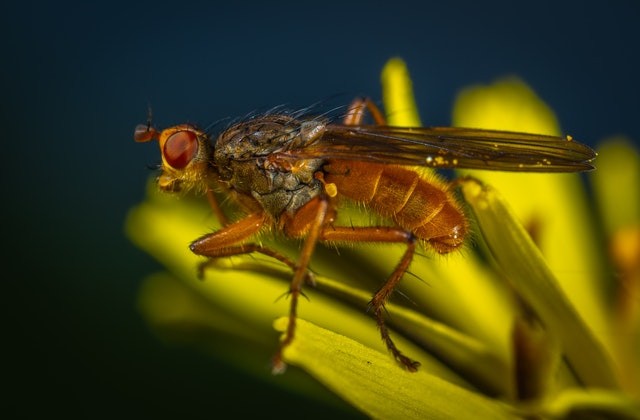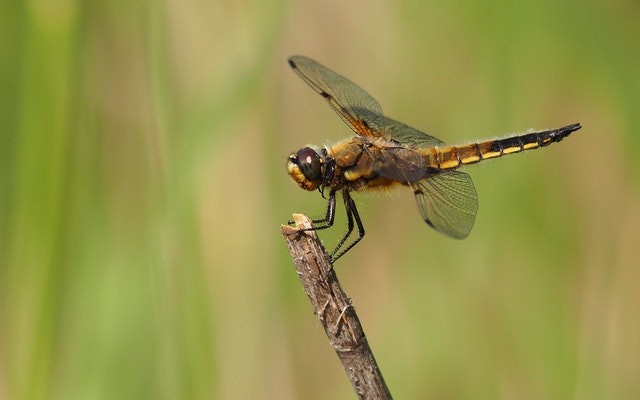In Germany, at a UNESCO World Heritage site in old lake sediments of the Messel Pit, Researchers have discovered a previously unknown skeleton of a fossil fly species. In the tummy of the fossil fly, various plant pollen could be seen which gives exceptional insights into the behavior of their feeding, the duty of the fly as a pollinator, and their ecology.

The Skeleton Pollen
The attention of the researchers was not caught by the fly itself, but its big belly suggesting that the belly was still full with the last food intake of the fly. Shockingly, the stomach content analysis showed that it was full of different plant's pollen. The skeleton pollen from the stomach of the fly was used to regenerate the old environment resided by the fly, the interaction of biotic between fly and plant, and the behavior of the fly during feeding.
Today, butterflies, bees, and bumblebees are the common pollinators, which are also well known to feed on pollen. It is rarely addressed that flies also have an important role they play in pollination.
Fridgeir Grímsson from the University of Vienna, the Department of Botany and Biodiversity Research said: "The rich pollen content they found in the stomach of the fly advocates that flies were already transporting and feeding on pollen 47 million years ago and reveals it performed an important duty in the dispersal of pollen of several plant taxa, flies were common pollinators in old tropical equivalent ecosystems and they might even have surpassed the bees," the researcher concludes.
ALSO READ : Flies Offer Hope for Dying Hemlock Forests
Role Of Flies as Pollinators
Flies as pollinators are likely to act as a good alternative or option to bees because different species of flies are present all year round and usually visit flowers to feed on pollen and/or nectar to aid major biological functions which include flight and reproduction. Because of their hairy nature, flies also pick up and transport pollen or nectar from different varieties of flowers.
Taxa of a fly are highly variable when considering the body size, which can be paired to the floral morphology of a certain crop for pollination which can either be selected by species or between species through nutrition manipulation of the larval stage. In conclusion, some fly taxa are precedently easily over-reared with reasonably low inputs, safety requirements, and manageable health and this gives an insignificant risk of disease transference to current wild pollinators if they are reared under secluded colony situations. Moreso, flies do not sting workers at farms.

Avoiding Long-Distance Flights For Food
The drawn-out pollen was influenced by grains of water willow (Decodon) and virgin ivy (Parthenocissus). Today, the decodon is a sub-shrub maturing in wetlands and the shallows of lakes, advocating the habitat of the open low canopy.
The co-dominance of Parthenocissus also advocates that the fly was feeding on plants growing at the forest margin around the old Messel lake. Grimsson says that "It is possible that the fly stayed clear long-distance flights amid food sources and look for pollen from closely related plants."
RELATED ARTICLE : Three Sand Flies Actually Represent New Species, Researchers Say
For more news, updates about flies and similar topics don't forget to follow Naturwe World News!
© 2025 NatureWorldNews.com All rights reserved. Do not reproduce without permission.





